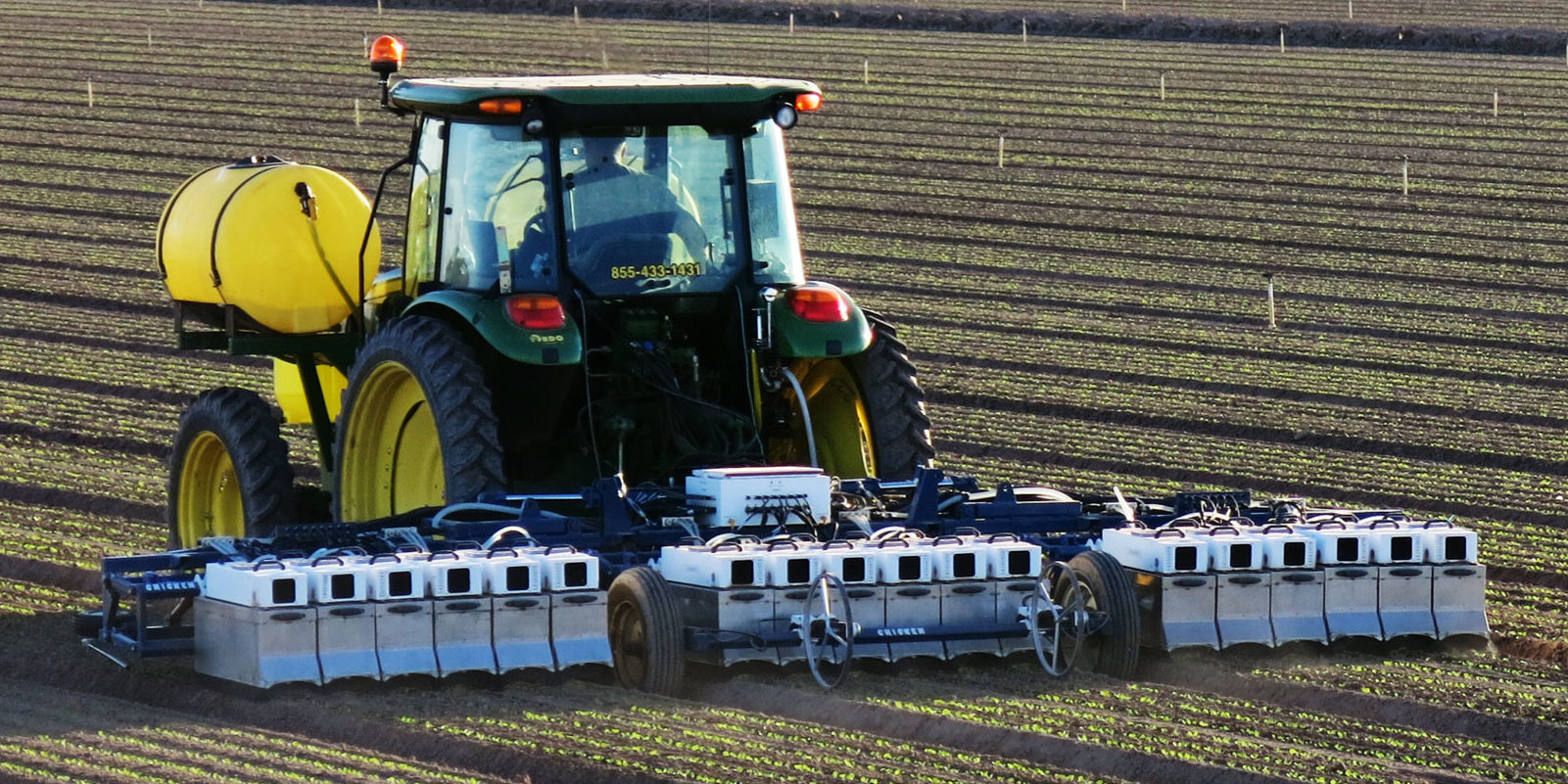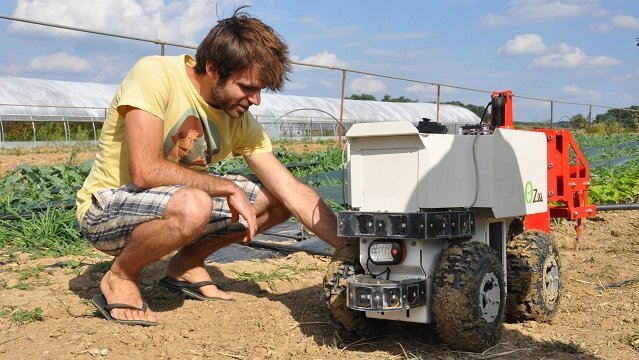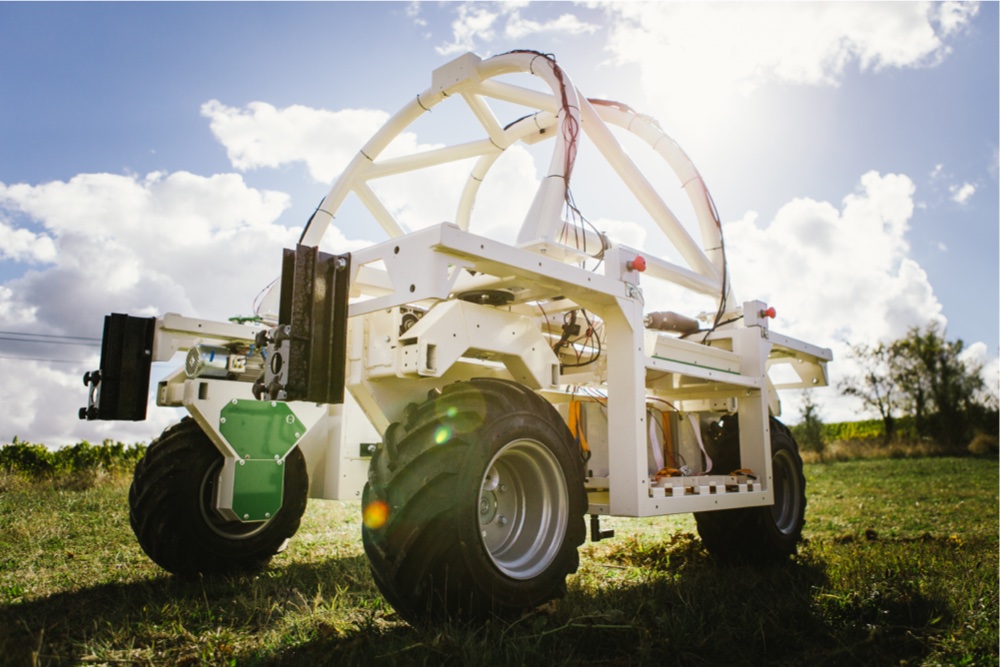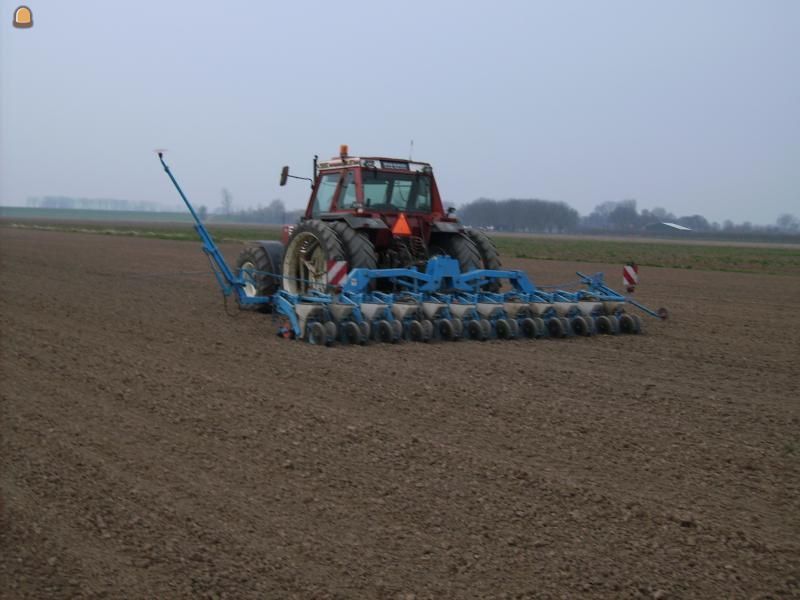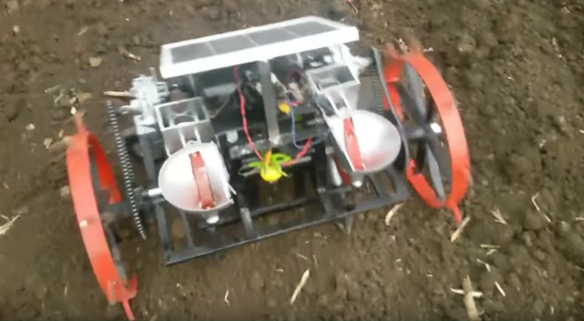PRE2016 3 Groep1: Difference between revisions
No edit summary |
No edit summary |
||
| Line 106: | Line 106: | ||
In 2006 an Australian company designed a machines that is able to plant 6 rows at the time. Eventually the machines had been sold to England and Dutch farmers as well. | In 2006 an Australian company designed a machines that is able to plant 6 rows at the time. Eventually the machines had been sold to England and Dutch farmers as well. | ||
[[File:Hqdefault.jpg]] | |||
=='''Field robot event'''== | =='''Field robot event'''== | ||
Revision as of 15:10, 18 February 2017
Presentation 1:
Problem description Model the economical and ecological impact of using robots (drones) in agriculture.
Objectives
The system must
- use drones to aquire data
- analyse the data
- react to the results of the analysis
approach
-research state of the art
-abstract from state of the art
-contact with user
-Create model
-analyse impact
USE aspects
-Societal problem of hunger
-Cheaper food for user
-Cheaper then workers in the long run
State of the art automated argiculture
Weeding
There are some quite exciting technological developments going on in the area of automated weeding. The most important technologies will be discussed below.
Deepfield Weeding Robot
The first far-developed technology is the Deepfield Weeding robot of Bosch, see below.
This robot has GPS navigation to move through the fields with a 90% electrical efficiency. A row of linear actuators is attached to the bottom of the robot. When the robot detects weed is punched one of the actuators in the ground the destroy the little plant. The company claims that the positions accuracy is 2 mm and that it can remove 20 weeds per second. Given 40 weeds per square meter, the robot can process a hectare in three hours. The machine will cost about the same as a midsized tractor (http://www.dairyherd.com/news/german-company-demonstrates-automated-weeding-machine).
Advantages of this design:
- Herbicide-free farming
- Relative fast operation
Disadvantages of this design:
- Only suitable for small weeds
- Only suitable for field with small crops
There is also an other variant of this machine under development. This machine looks almost the same, but it does use herbicides. A greater working with of six to seven meters is possible with foldable booms. This machine will still lead to massive herbicide savings, but with a much bigger capacity potential.
LettuceBot
A company called Blue River created a robot which can identify weed and excess planted lettuce plants with the use of image recognition. When it is determined which plants need to be removed, the robot sprays a little amount of herbicide on it. This can result in a 90% reduction of use of perticides. Currently the robot is towed behind a conventional tractor, but Blue River is working on an fully automated version of the LettuceBot.
While driving four miles per hour the precision is a quartile of an inch. The machine can process 40 acres per day and can cared for up to 5000 plants per minute. The machine also collects data about the plants when driving through the field to keep track of the growth and health of the plants.
Advantages of this design:
- It is already a fully functioning machine
- It is really fast
Disadvantages of this design:
- It can only be used on lettuce
- It isn't fully autonomous yet
Naïo Technologies
Naïo Technologies is a company that produces different types of weeding robots. They are suitable for different kinds of users and crops. The one thing that the different robots have in common is that they remove weeds by hoeing. This lets the robots stand out to the opposing companies and robots. The most imporant robots of Naïo technologies can be seen below.
The first robot is called 'Oz' and is suitable for smaller fields. The smalle battery driven robot has a maximum moving speed of 1.3 kilometers per hour. It follows the mounds via different optical sensors and RTK GPS. The robot can turn itself around to start independently with a new mound. It only uses about one euro worth of electricity to weed one hectare.
The second robot is created for bigger farms and uses the same techniques as the Oz robot.
The third robot is called 'Ted' and is used to weed vineyard. The maximum speed is four kilometer per hour and it can maintain a surface of about 25 hectares. This robot also shares the most techniques used in the other robots. The company is working on extending the capabilities of the robot with adding functionalities as mowing, leaf thinning and trimming.
Seeding Machine
There are two kind of seeding machines the normal one and the precision machine.
Normal seeding machine
A seeding machine is a device that is able to sow the seeds by metering out the individual ones. The machine positions the seeds in a soil and covering them to a certain average depth. The machines makes it sure that the seeds are placed at equal distances and depth. Eventually de machine covers the seeds with soil so they can’t be eaten by birds.
Precision Agriculture
For the precision agriculture there is a new design for seeding machines. This model makes use of GPS. This makes it possible that the machine exactly knows where to drop the seeds.
Automated Seeding machines
In 2006 an Australian company designed a machines that is able to plant 6 rows at the time. Eventually the machines had been sold to England and Dutch farmers as well.
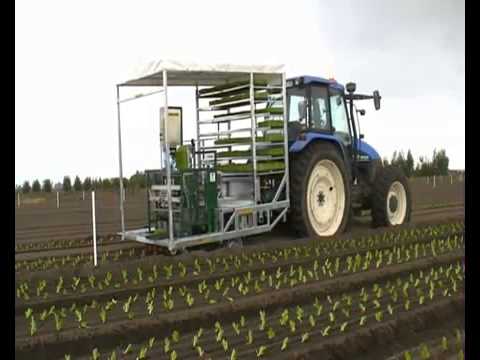
Field robot event
In 2016 there was a robot event in Hassfurt in Germany. One of the games they played was a seeding game on the field. The robots has to operate on an area of 10 x 1 meters. The robot should take wheat seeds from a station and has to sow them on the area. There were no specific rules how the machines should provide the task. The robots had to distributes the seeds as even as possible and cover them with soil.
 Other kind of mini robot seeders
Other kind of mini robot seeders
References
-Company that makes ground scans and 3D scans with drones: https://3dr.com/ -Drones made for agriculture: https://www.sensefly.com/applications/agriculture.html -Drones that also map the ground: http://www.precisionhawk.com/ -Examples of agriculture robots: https://www.intorobotics.com/35-robots-in-agriculture/ -Some facts and companies analyzed: https://www.therobotreport.com/news/ag-in-transition-from-precision-ag-to-full-autonomy -Benefits analyzed: https://www.geospatialworld.net/article/drones-and-robots-future-agriculture/ -Professors etc. giving their views: http://fruitworldmedia.com/index.php/featured/robots-huge-potential-robotics-agriculture-industry/ -Japanse company that founded a fully autonomous indoor farm: http://spread.co.jp/en/sustainable-farming/ -Project of the EU for percision lifestock farming: http://www.eu-plf.eu/index.php/publications/ -eLeaf technology: http://www.eleaf.com/products-showcase-fruitlook#technology-pimapping -Automated precision weeding: http://www.bluerivert.com/ -Case study of drones in argiculture https://blog.dronedeploy.com/case-study-ce39c9f44e48#.tsnfhikpp -Mechanical weeding robot http://link.springer.com/article/10.1023%2FA%3A1015674004201?LI=true -Seeding and fertilazation robot goo.gl/s2ehLC -Machine-to-machine communication goo.gl/UVJDFS -Framework for argicultural systems goo.gl/RGzsuo -Farmer in the Netherlands which uses the drone: http://www.loonbedrijfthijssen.nl/contact/ -An other farmer in that uses drones: http://www.vandenborneaardappelen.com/ -Bosch Weeding Robot: https://www.deepfield-robotics.com/en/Weeding.html


